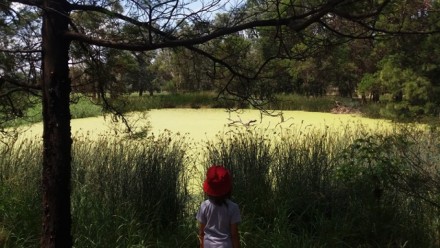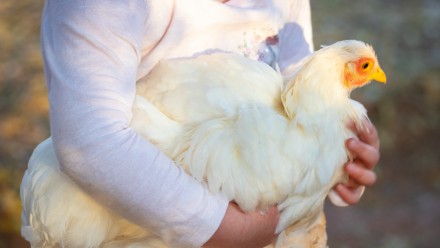Investigating Salmonella Typhimurium linked to backyard poultry
Share
MAE student Troy Laidlow applies a One Health approach to a Salmonella Typhimurium linked to backyard poultry.
As reported by Troy Liadlow.
It is my belief, drawing on my knowledge and experience as a veterinarian and One Health practitioner, that effective zoonotic disease public health measures can only truly be achieved through cross‑discipline collaboration. In 2019, I made the decision that to really appreciate and understand the reasons for public health measures put in place by Australian health departments, that at times puzzled me, I needed to be more engaged with human health. After successfully enrolling into the Master of Philosophy in Applied Epidemiology (MAE) Program at the Australian National University I was given the opportunity to work in Queensland Health’s Communicable Diseases Branch. Success! Not only did this placement provide me with an opportunity to grow as a veterinarian and epidemiologist and experience the development of public health measures, it also provided me a rich One Health experience.
During the midst of the COVID-19 pandemic in 2020, I participated in the investigation of an unusual salmonellosis outbreak with OzFoodNet, Queensland. OzFoodNet is a nationally co‑ordinated body responsible for conducting surveillance on foodborne disease to investigate, describe, and understand foodborne disease to provide better evidence of how to prevent foodborne illness. Early case interviews suggested an association between those who were unwell and backyard chickens. It was soon realised that this unique Australian outbreak needed the knowledge and experience of animal, environmental, and human health experts, and their teamwork, to control. As cases grew and interviews continued, the hard work of epidemiologists from OzFoodNet, veterinarians from Biosecurity Queensland, environmental health officers from Queensland’s public health units, and laboratory staff at public health microbiology laboratories found a link between cases, produce/pet stores, and a chicken farm. Through this continued partnership, the investigation gathered more evidence to support the link, and prevented and controlled the spread of the outbreak.
I toured the chicken farm, along with the investigation team, to collect specimens and assess biosecurity practices. Boot swabs, drag swabs, and surface swabs were collected while farm management and staff were interviewed about the practices they used. As data came together and results were analysed, a story started to form. All cases connected to this outbreak reported exposure to live chickens with 97% reporting close contact with backyard chickens. Most cases (82%) were aged younger than 12 years and reported behaviours such as touching, kissing, and snuggling chickens. These purchased chickens were traced back to different produce/pet stores and 72% of these had the same chicken supplier—the visited chicken farm. The collected samples from the chicken farm were shown to have the same types of Salmonellae that were causing illness in cases. Finally, the farm assessment found several areas where biosecurity practices required improvement.
A swift response from the investigation team to control and prevent further spread involved a media release detailing the outbreak and advice to owners of backyard chickens, development of health-related fact sheets on ‘chickens and Salmonella’ made available on government websites, and implementation of increased biosecurity measures on the chicken farm.
So, what could be a reason for this outbreak? It is not surprising to hear that COVID-19 lockdown changed Australian buying behaviour. As Australians struggled to find toilet paper, they also scrambled to find eggs, which drove some Australian buyers to raise their own backyard chickens. Although human contact with infected chickens and their environment is a well‑documented risk factor for Salmonella, many backyard owners of chickens are unaware of these risks. This often leads to a lack of appropriate hygiene behaviours, such as hand washing after handling chickens. When poor human-animal handling factors are met with limited on‑farm biosecurity measures, there is a potential for widespread zoonotic outbreaks if live animals are made available to the public.
Salmonellosis, as with other zoonotic diseases, represent a challenge to manage. Only through the cooperation of animal, environmental, and human health experts can we prevent and control outbreaks and improve health outcomes for zoonotic diseases. This could involve the sharing of surveillance data between different government agencies to detect potential outbreaks early, joint public education on ways to safely interact with animals, and helping animal industries meet biosecurity measures for animal and human diseases of concern.
Queensland Health and the MAE Program have provided an opportunity for me to grow. The combination of this human health experience with my veterinary background has further strengthened firsthand the concept that the health of animals, people, and the environment are interconnected. For any person that works or has interest in One Health, I highly recommend moving beyond your comfort zone and spending time outside of your discipline with human, animal, or environmental health experts to truly appreciate that disease moves freely across these boundaries. Only through cross‑discipline collaboration will we be able to understand and successfully manage problems that have defied a traditional sectoral approach.











